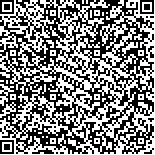| 摘要: |
| [摘要] 目的 观察基于主动健康模式的非药物干预可视化针刀结合运动康复治疗肩袖损伤的临床疗效。方法 选取2022年7月至2023年7月在广西壮族自治区人民医院接受可视化针刀和手法治疗的60例肩袖损伤患者,采用随机数字表法分为观察组(30例)和对照组(30例)。观察组采用肌骨超声引导下针刀松解冈上肌治疗,对照组采用常规推拿手法治疗。观察组和对照组均配合肩关节运动康复治疗。两组治疗每3 d 1次,持续2周。治疗前及疗程结束后即刻进行超声弹性成像检查,观察患肩冈上肌弹性模量值变化,并比较两组患者疼痛视觉模拟量表(VAS)评分、Constant-Murley肩关节评分量表(CMS)评分。结果 治疗后,两组冈上肌弹性模量值、VAS评分均低于治疗前,CMS评分高于治疗前,差异均有统计学意义(P<0.05)。治疗后观察组冈上肌弹性模量值和VAS评分低于对照组,CMS评分高于对照组,差异均有统计学意义(P<0.05)。结论 基于主动健康模式的非药物干预可视化针刀结合运动康复治疗肩袖损伤具有较好的效果,在减轻肩袖疼痛,改善肩关节功能方面有明显的优势。 |
| 关键词: 主动健康 肩袖损伤 冈上肌 超声弹性成像 针刀 手法 运动康复 |
| DOI:10.3969/j.issn.1674-3806.2023.12.04 |
| 分类号:R 247.9 |
| 基金项目:广西自然科学基金项目(编号:2023GXNSFAA026119);广西科技重大专项项目(编号:桂科AA22096018);广西中医药适宜技术开发与推广项目(编号:GZSY22-53) |
|
| Observation on the clinical efficacy of non-drug intervention with visual acupotomy combined with exercise rehabilitation in treatment of rotator cuff injury based on proactive healthcare mode |
|
WANG Cheng, LI Shi-liang, LYU Ya-nan, et al.
|
|
Department of Massage, the People′s Hospital of Guangxi Zhuang Autonomous Region(Guangxi Academy of Medical Sciences), Nanning 530021, China
|
| Abstract: |
| [Abstract] Objective To observe the clinical efficacy of non-drug intervention with visual acupotomy combined with exercise rehabilitation in treatment of rotator cuff injury based on proactive healthcare mode. Methods Sixty patients with rotator cuff injury who received visual acupotomy and massage in the People′s Hospital of Guangxi Zhuang Autonomous Region from July 2022 to July 2023 were selected and divided into observation group(30 cases) and control group(30 cases) using the random number table method. The observation group was treated with musculoskeletal ultrasound-guided acupotomy to relieve the supraspinatus muscle and the control group was treated with conventional massage, and both the observation group and the control group were treated with shoulder joint exercise rehabilitation therapy once every three days for 2 weeks. Before and immediately after treatment, ultrasound elastography was performed to observe the elastic modulus value of the affected supraspinatus muscle, and the changes in pain Visual Analogue Scale(VAS) scores and Constant-Murley Scale(CMS) scores were compared between the patients in two groups. Results Compared with those before treatment, the elastic modulus value of the affected supraspinatus muscle and VAS scores in the patients of both groups were decreased after treatment, while the CMS scores were elevated after treatment, and the differences were significant(P<0.05). After treatment, the elastic modulus value of the affected supraspinatus muscle and VAS scores in the patients of the observation group were lower than those in the patients of the control group, and the CMS scores in the patients of the observation group were higher than those in the patients of the control group, and the differences were significant(P<0.05). Conclusion Non-drug intervention with visual acupotomy combined with exercise rehabilitation has good effects on the treatment of rotator cuff injury and has obvious advantages in alleviating rotator cuff pain and improving shoulder joint function. |
| Key words: Proactive healthcare Rotator cuff injury Supraspinatus muscle Ultrasound elastography Acupotomy Manipulation Exercise rehabilitation |

